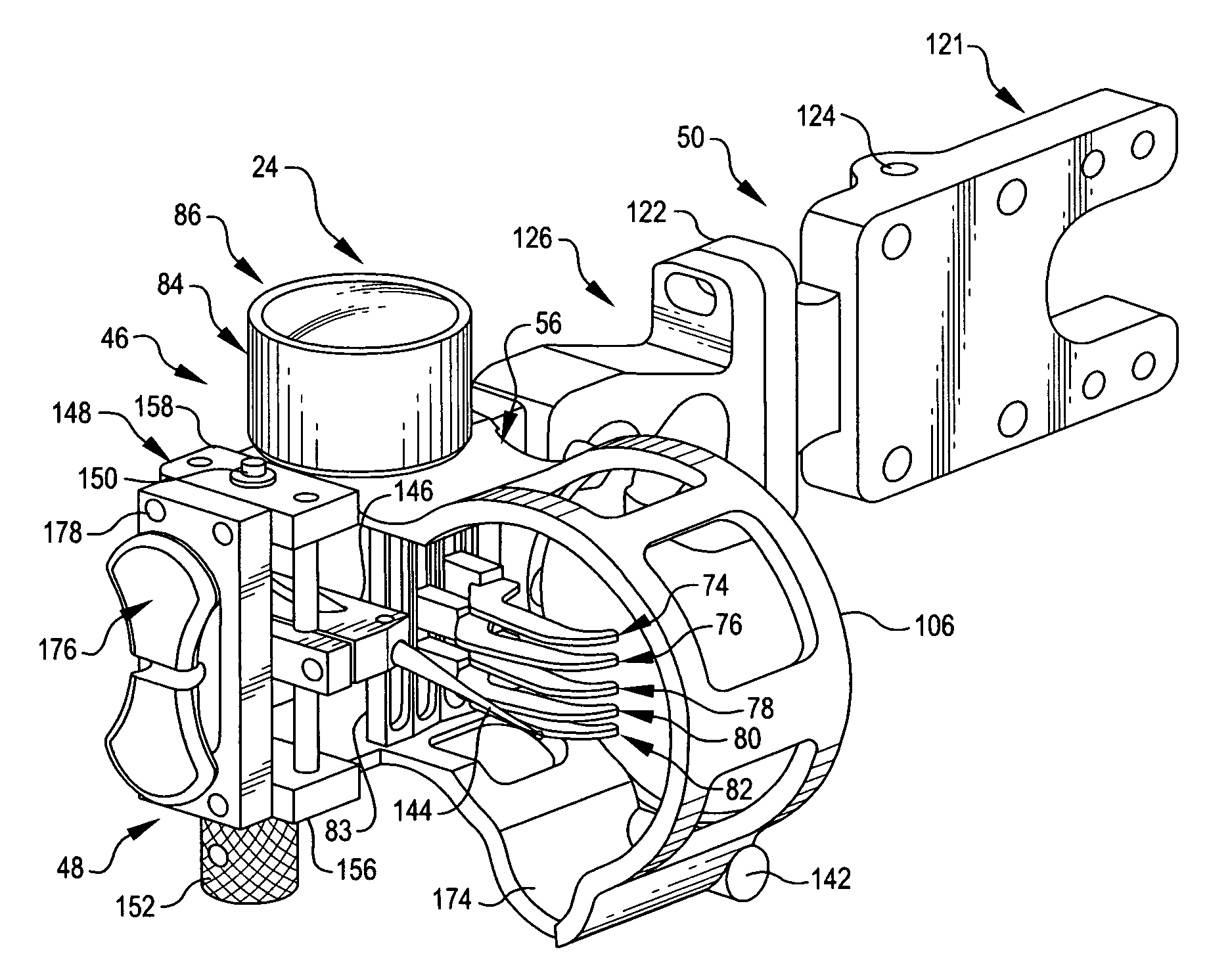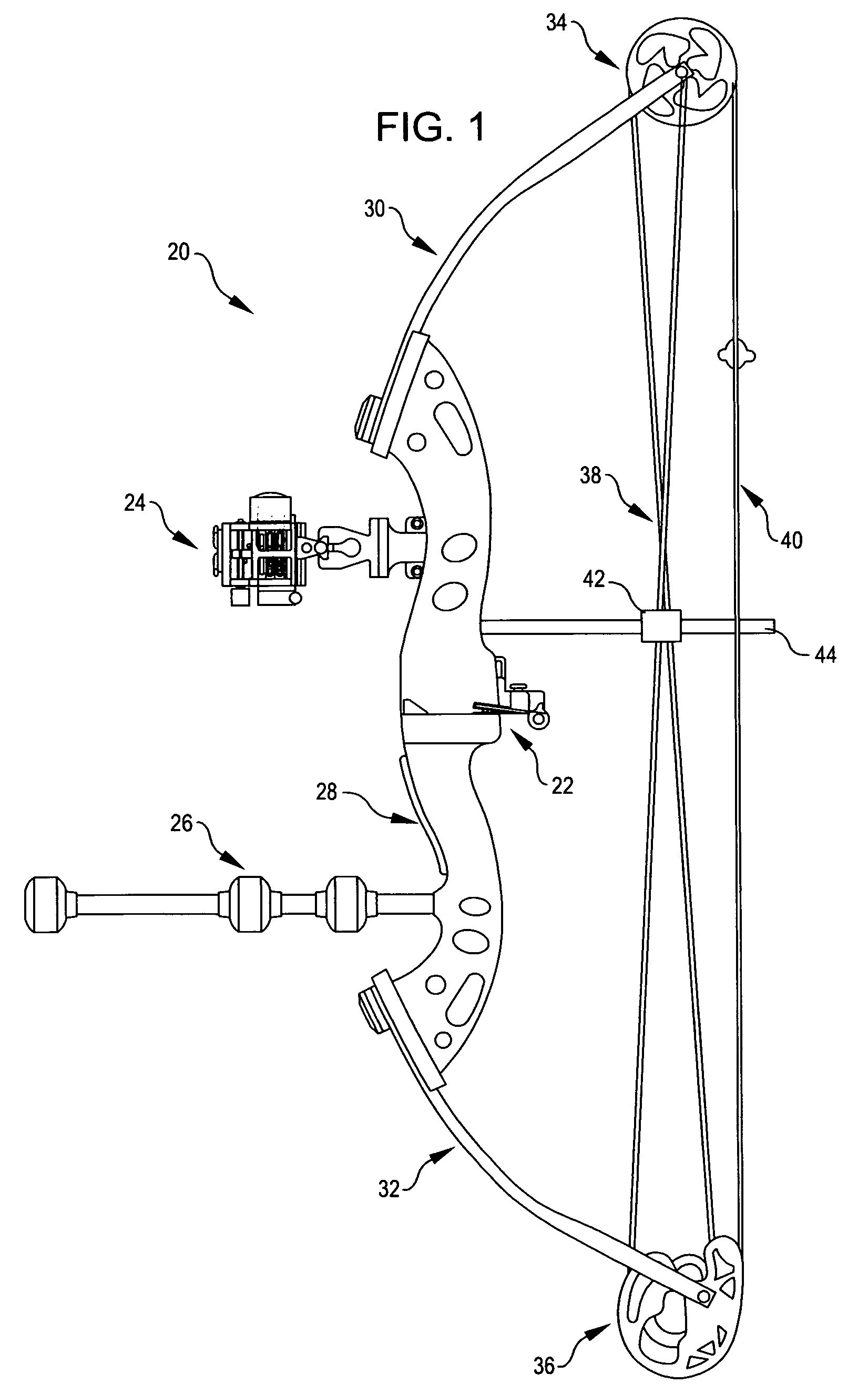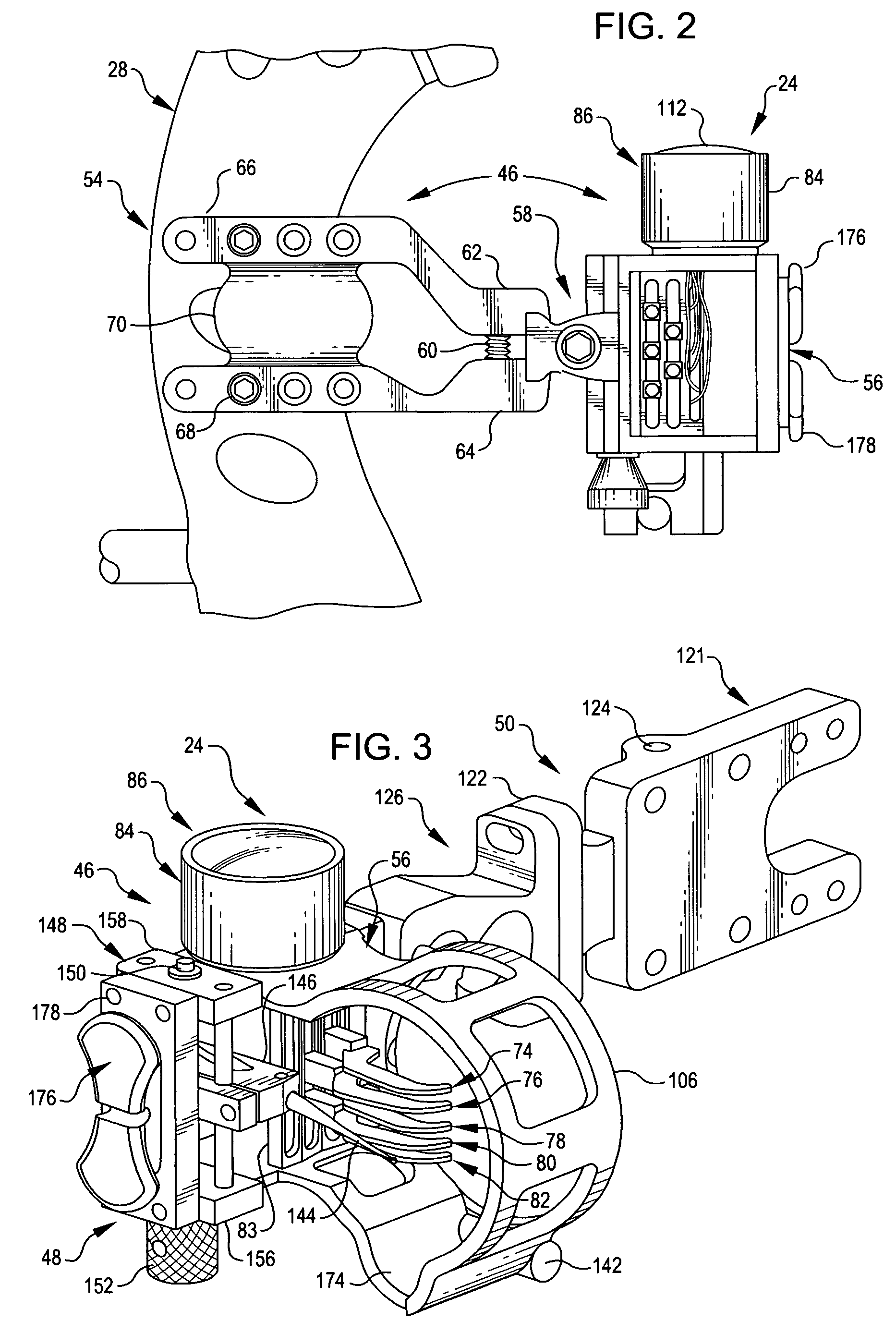Archery bow sight
a bow sight and archery technology, applied in the field of archery bow sights, can solve the problems of easy to be seen even under extremely poor lighting conditions, and achieve the effects of reducing shock and vibration loads, reducing sound, and reducing vibration
- Summary
- Abstract
- Description
- Claims
- Application Information
AI Technical Summary
Benefits of technology
Problems solved by technology
Method used
Image
Examples
Embodiment Construction
[0034]Referring now to the illustrations, FIGS. 1 and 2 depict a compound bow 20 equipped with a fall-away arrow rest 22, an optical sight 24, and a modular stabilizer 26. Bow 20 is of conventional construction. It has a riser 28, upper and lower limbs 30 and 32, cams 34 and 36 at the far ends of limbs 30 and 32, bus cables (collectively identified by reference character 38) a bow string 40, and a cable slide 42 mounted on an elongated guide 44.
[0035]Bow sight 24 includes a basic unit 46 (FIG. 2), an optional add-on or accessory 48 (FIG. 3) which provides an additional sighting capability, and a second, also optional, add-on or accessory 50. This accessory is employed to adjust torque and cant.
[0036]The basic unit 46 is assembled directly to the riser 28 of bow 20 (FIG. 2). If the torque and cant compensation accessory 50 is added, the add-on is assembled to the basic unit; and it is a mounting component of the accessory which is mounted to bow riser 28.
[0037]Referring now most part...
PUM
 Login to View More
Login to View More Abstract
Description
Claims
Application Information
 Login to View More
Login to View More - R&D Engineer
- R&D Manager
- IP Professional
- Industry Leading Data Capabilities
- Powerful AI technology
- Patent DNA Extraction
Browse by: Latest US Patents, China's latest patents, Technical Efficacy Thesaurus, Application Domain, Technology Topic, Popular Technical Reports.
© 2024 PatSnap. All rights reserved.Legal|Privacy policy|Modern Slavery Act Transparency Statement|Sitemap|About US| Contact US: help@patsnap.com










